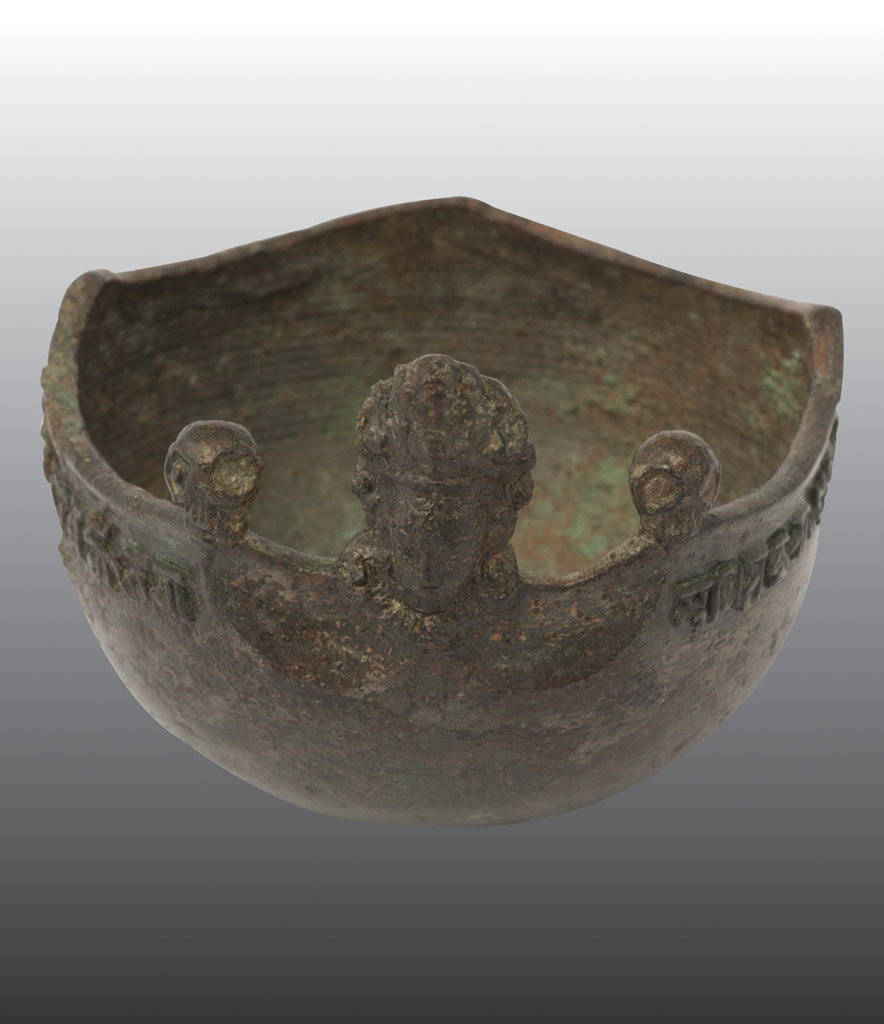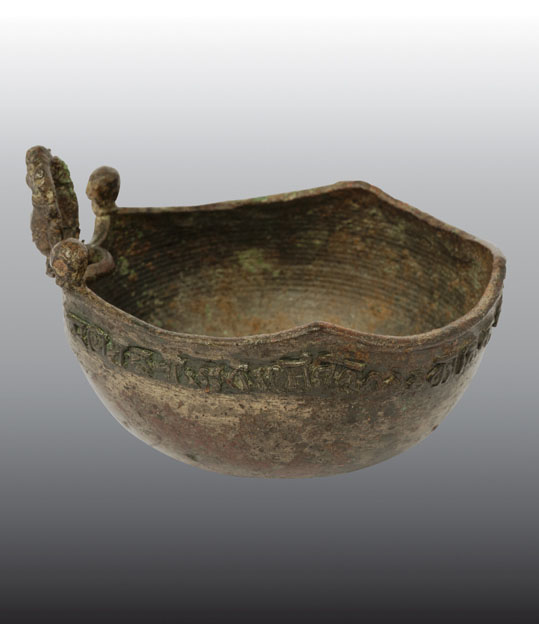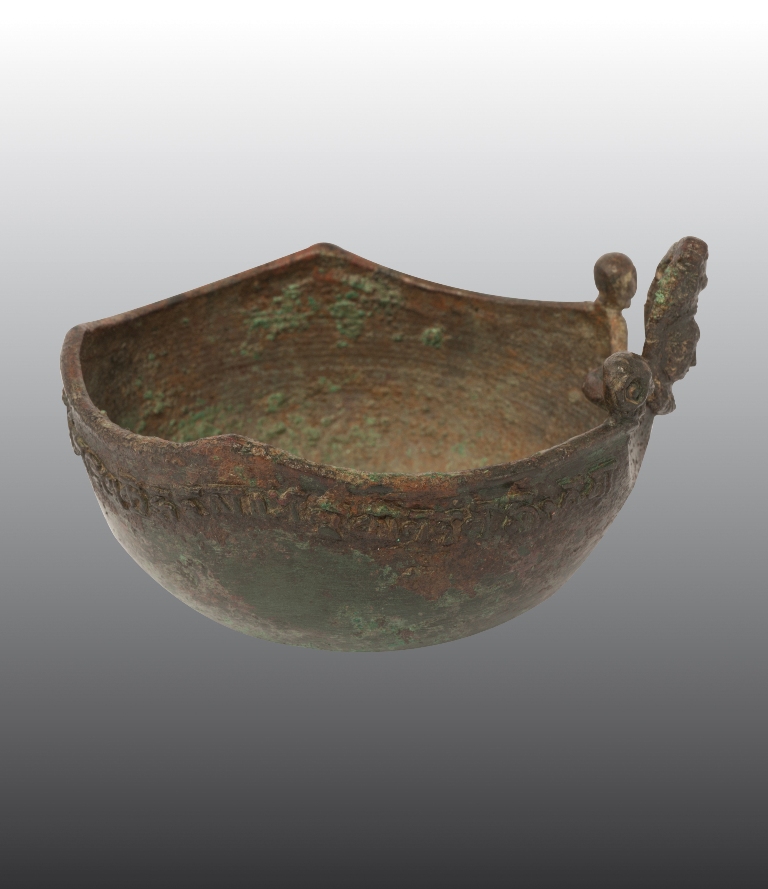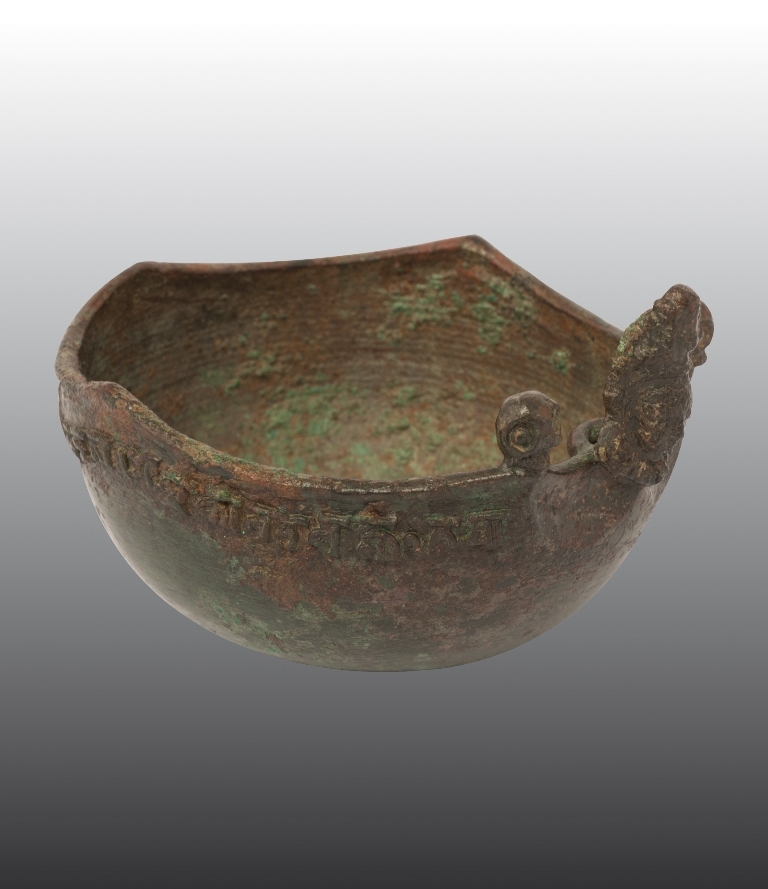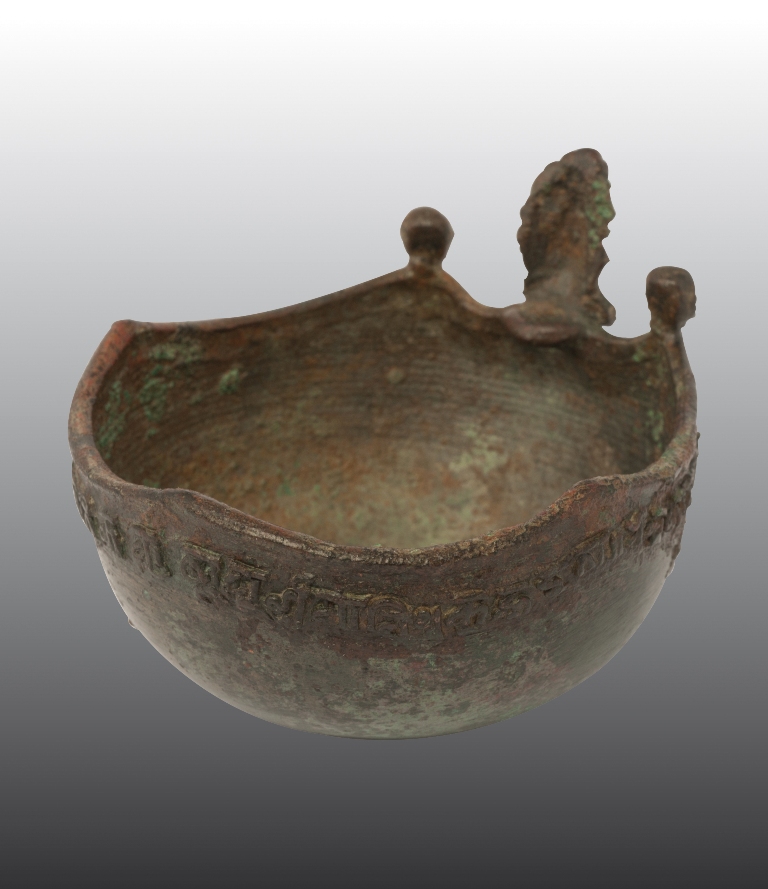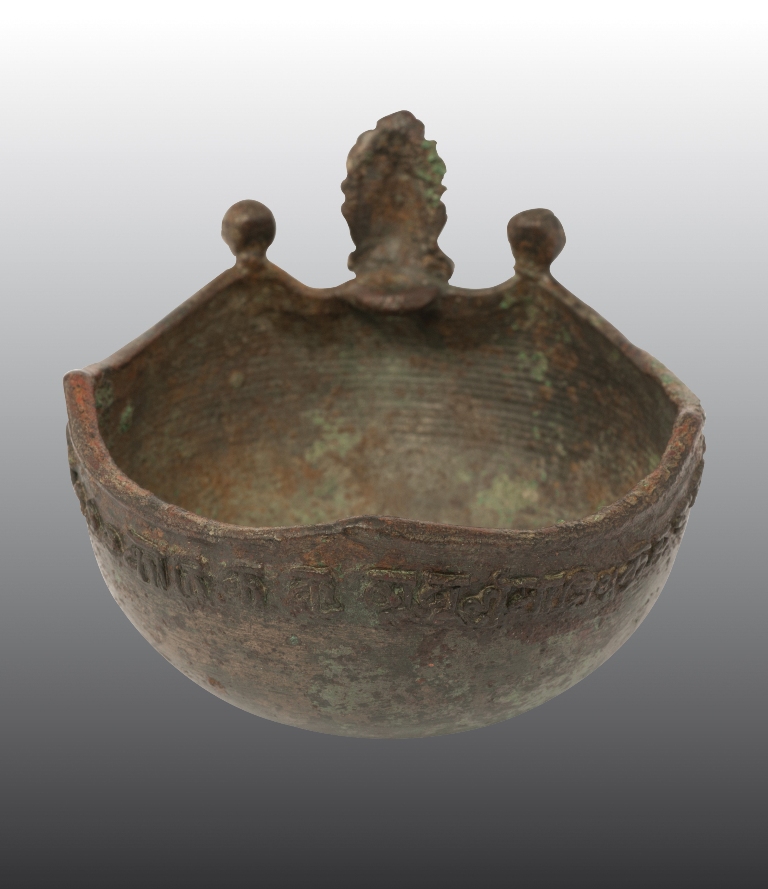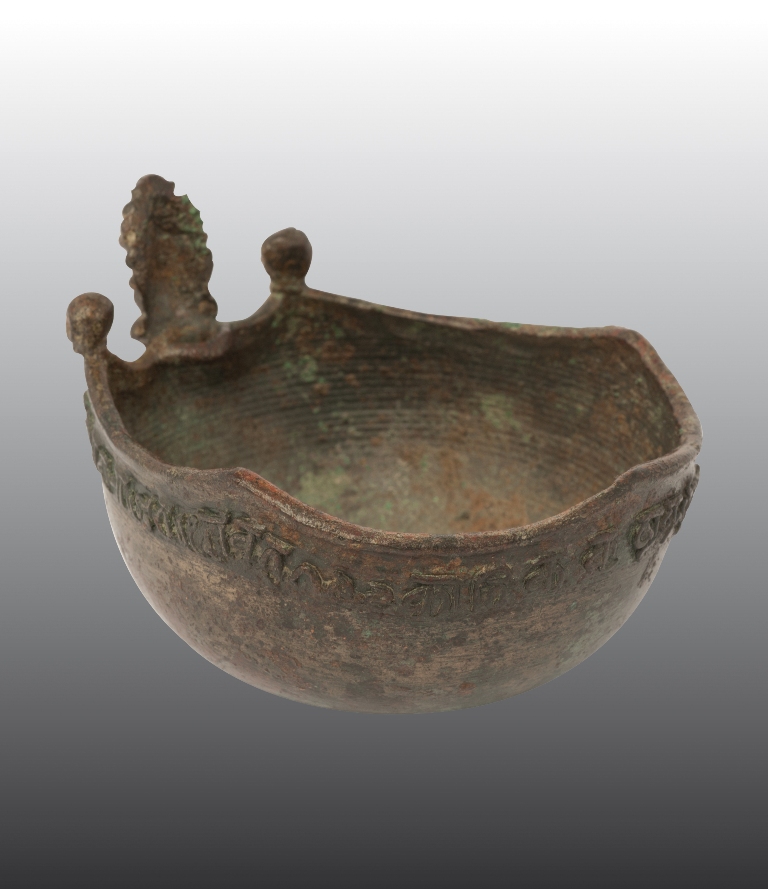KapâlaNepal - Copper alloy - 7,2x11 cm - 5x9,5 cm - Newar year 799 (1678 C. E.)Skulls (Sanskrit kapâla) with the function of ritual bowls have been used by tantric practitioners in the Indian subcontinent, in Nepal, and later in Tibet. In some tantric rit- uals the bowl obtained from a human skull is an indispensable implement and several yogins as well as deities are portrayed holding it in the palm of one of their hands. Similar skulls are held by female tantric practitioners hav- ing ritual intercourse with with animal-headed gods in an album including thirty-six line-drawings kept in the Na- tional Archives of Kathmandu (1). As suggested by the inscription in the Newari language and script surrounding its border and bearing the Newar year 799, corresponding to 1678 C. E., the kapâla illustrated here is related to the Newar religious context of the Nepal Valley or Nepal Mandala, as the Kathmandu Valley has been called by its original inhabitants, the Newars, well before the present capital of Nepal came into existence. The face at the front of the kapâla, sided by two human skulls, represents apparently Bhairava, Shiva’s wrathful manifestation, to whom water and cow milk are offered during a morning ritual in the superbe Bhairava temple devoted to him, with its façade covered in gilt metal, at Taumadhi, the central one of the three chief squares in the town of Bhaktapur, a name understood as “City” of Hindu “Devotion”, though still called by the Newars with its ancient name of Khvapa, in the Nepal Valley (2).
(1) Cf. Gudrun Bühnemann, Buddhist Iconography and Ritual Paintings and Line Drawings from Nepal, Lumbini International Research Institute, Lumbini 2008, pp. 133-151. (2) Cf. Mary Shepherd Slusser, Nepal Mandala. A Cultural Study of the Kathmandu Valley, Princeton University Press, Princeton 1982, vol. I, p. 102. ALC (Free Circulation) |
